Sedum vs Echeveria: Are You Growing the Right Succulent?
Succulents are all the rage right now for indoor gardens and landscapes. Their cute, fleshy leaves and tolerance for a little neglect make them popular picks. But did you know there are hundreds of different succulent varieties? Two common ones are sedum and echeveria – and they may look similar at first glance.
If you’ve got some plump green plants at home, how can you tell these two succulent cousins apart? The mystery could be solved by checking a few key details on their leaves, flowers, and growing habits. Stick around to find out the 4 main ways to distinguish sedum vs. echeveria plants. You’ll be a succulent detective in no time!
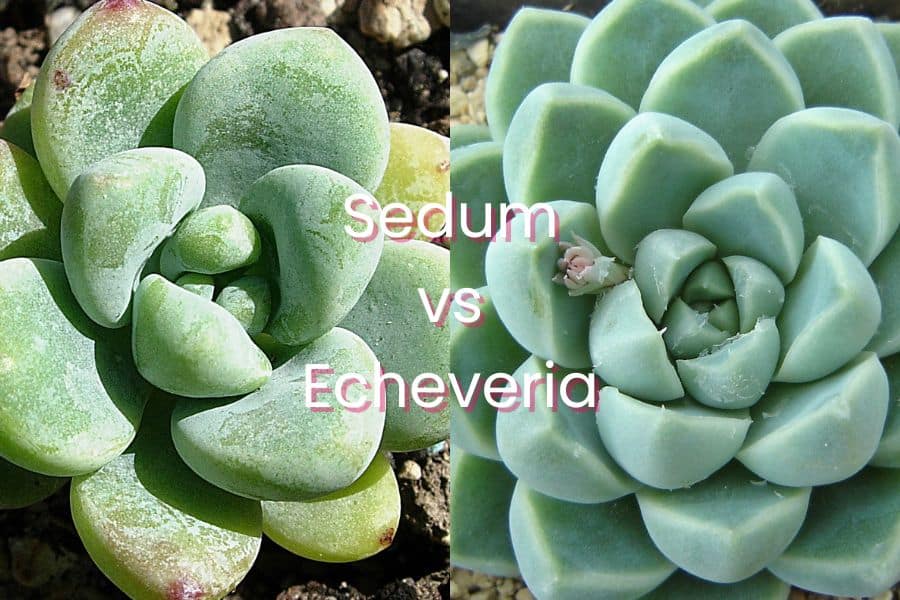
Contents
The 4 Biggest Differences Between Sedum and Echeveria
1. Where They’re From Originally
Sedum plants are natives of the Northern Hemisphere, originating across parts of North America, Europe, and Asia. Some species also hail from South America and Africa.
Echeveria, on the other hand, come from the semi-desert regions of Central America, mainly in Mexico. So if you’re growing one indoors, echeveria need a bit more warmth.
2. Their Signature Looks
Sedums come in two main types – upright varieties that grow in tall clumps up to 3 feet tall, or ground-hugging varieties that spread out like a mat only a few inches high. Their thick leaves can be round, flat, or needle-like in shape, colored in shades of blue, green, yellow, orange, red or purple depending on the season.
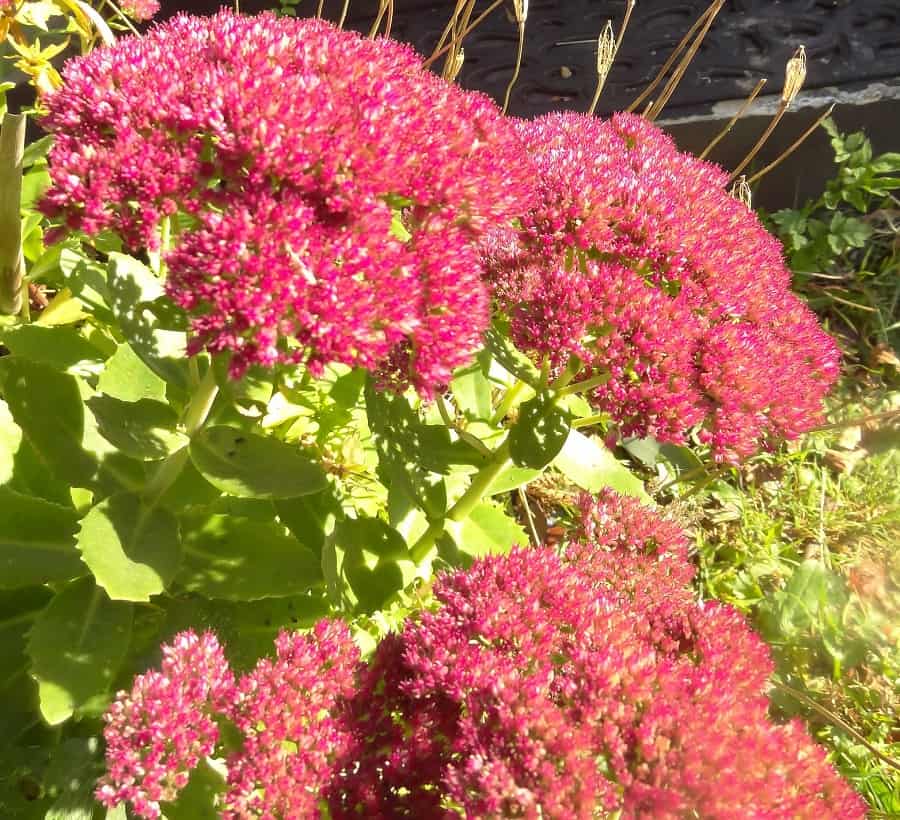
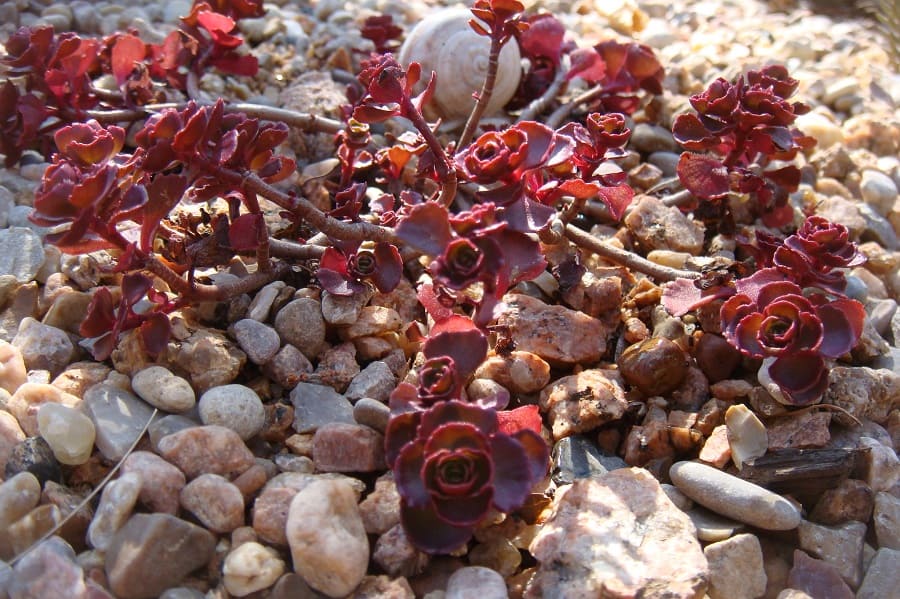
Echeveria plants form neat, compact rosettes resembling little rose flowers or heads of lettuce. The plump, spoon-shaped leaves spiral out in shades of grayish-blue, green or near-black. Some echeveria types have frilly, ruffled edges on their leaves for extra flair.
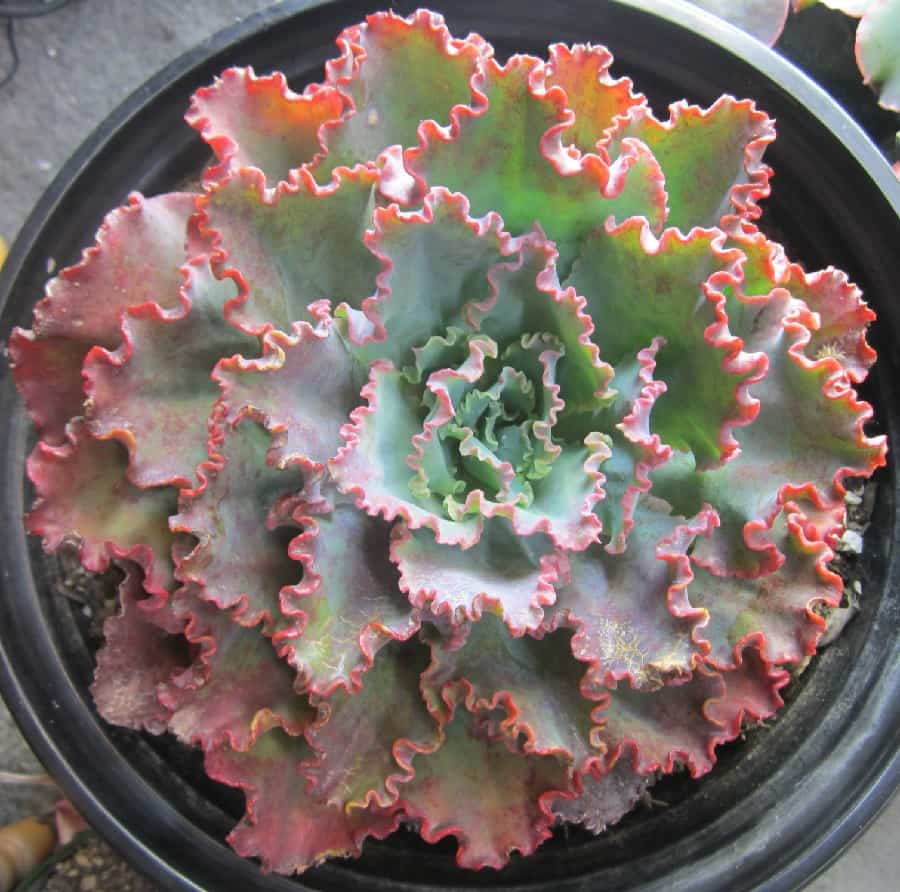
3. Their Flowering Styles
Both plants send up clusters of dainty flowers in warm months, but they look quite different. Sedums have small 5-petaled star-shaped blooms in reds, pinks, whites or yellows.
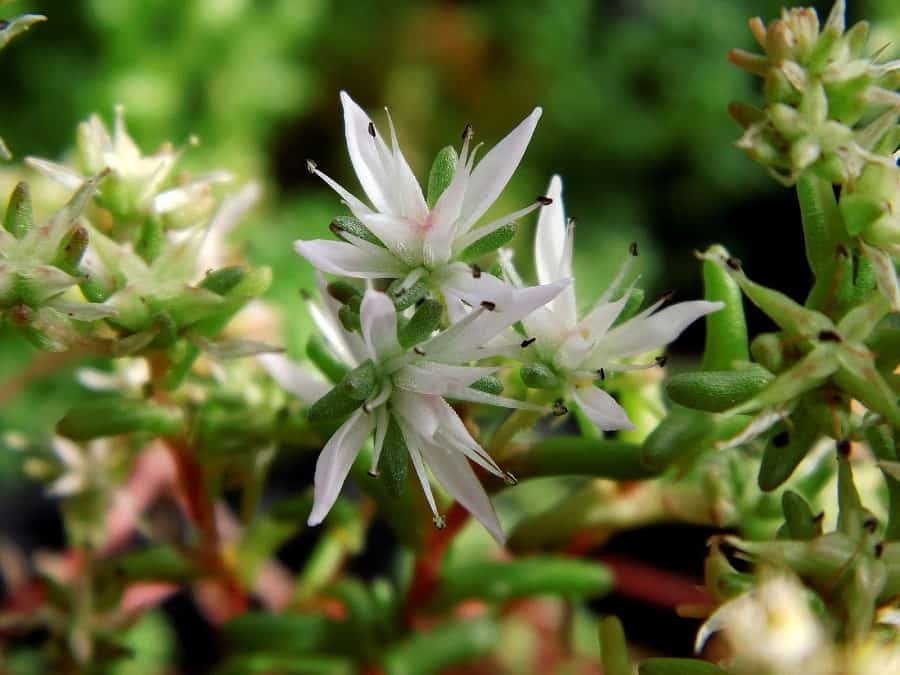
Echeveria blooms are more bell-shaped with pointed petals, usually in shades of red, pink or orange. Their flowers appear on short stalks sticking up from the rosette centers.
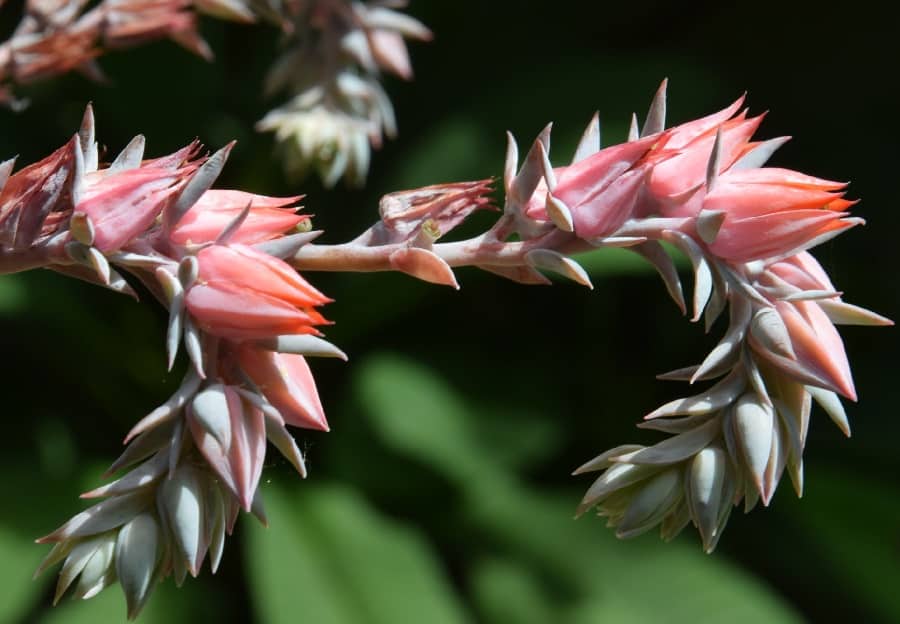
4. Cold Hardiness
Here’s a crucial difference if you garden where winters get frosty. Sedums are incredibly hardy, with some varieties able to survive temps down to -30°F! Most echeveria, on the other hand, can only take light frosts down to around 25-30°F before perishing.
What They Have in Common
Though they have their differences, both sedum and echeveria share some succulent similarities. They are drought-tolerant plants with thick, fleshy leaves designed to store water. Their flowers are delicate and both types prefer lots of direct sunlight and very little water to thrive.
Growing & Caring for Sedum & Echeveria
These two succulent cousins are relatively easy to care for, as long as you don’t over-water them! Here are some basic care tips:
- Light: Provide at least 6 hours of direct sun per day. Sedums can tolerate some partial shade.
- Soil: Use a well-draining potting mix designed for cacti and succulents. Regular potting soil holds too much moisture.
- Water: Allow the soil to fully dry out before watering again. During summer, you’ll need to water more frequently than in winter. Soak the soil thoroughly, but don’t leave standing water.
- Temperature: Sedums can take freezing temps and hot summers. Bring echeveria inside if nights drop below 25°F.
So now you know the telltale signs for identifying these two popular succulents. Whether sedums or echeverias, providing bright light, well-draining soil, and infrequent watering is key to keeping them happy and healthy! With a little know-how, you can be the perfect plant parent they deserve.
